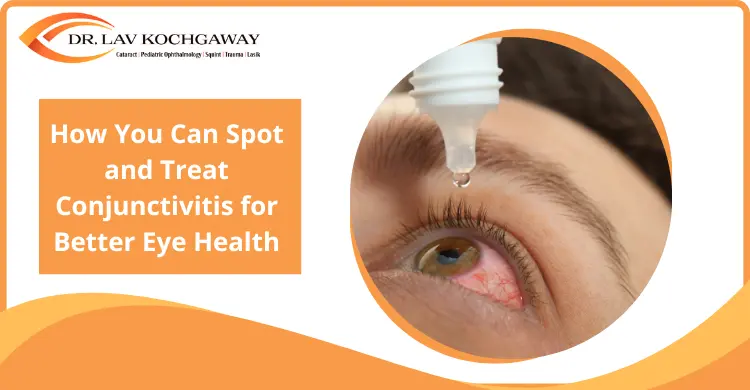
Conjunctivitis, commonly known as pink eye, is a frequent eye condition that can affect people of all ages. Though often mild, it can cause significant discomfort and, in some cases, lead to complications if left untreated. Understanding the symptoms and knowing the right steps for care is essential for protecting your vision and preventing the spread of infection.
Spot the signs of pink eye and learn practical steps to treat and prevent it safely.
Conjunctivitis happens when the conjunctiva, the thin, clear tissue covering the white of your eyes and the inside of your eyelids, becomes inflamed. The result? Red, irritated eyes that may water or even get a bit crusty.
There are three main types of conjunctivitis:
Catching it early and treating it properly is essential, both for comfort and to stop it from hopping from one person to another.
Conjunctivitis can make its presence known in several ways:
Spotting these signs early helps you take action before the condition worsens.
Understanding the subtle differences between the types of conjunctivitis can guide treatment:
While these indicators provide clues, a professional diagnosis is the most reliable way to determine the type and receive the right treatment.
Alongside treatment, simple home measures can ease discomfort:
These steps support healing and make the recovery process more comfortable.
Seek professional care if:
Early care ensures faster recovery and prevents complications.
Because viral and bacterial conjunctivitis are contagious, prevention is crucial:
Conjunctivitis can be uncomfortable, but early recognition and proper care make all the difference. Knowing the symptoms, understanding the type, and following effective treatment can ease irritation and protect your eyes from further complications. Pair professional guidance with simple preventive habits, and your eyes can recover quickly while staying healthy and clear, because taking care of your vision is always worth the effort.
Redness, itching, or irritation shouldn’t be something you just live with. With the right care, recovery can be quick and comfortable. Dr. Lav Kochgaway brings both expertise and empathy to every case, helping you understand what your eyes need to heal and stay healthy. Don’t wait for your symptoms to worsen.
Book your eye consultation and see the difference expert care makes.
Look for redness, watery or itchy eyes, mild swelling, and discharge. Early signs may also include irritation, burning, or a gritty feeling.
Viral causes watery discharge, bacteria shows yellow or green pus, and allergies bring itching in both eyes, though only an eye doctor can confirm.
Most cases improve within 7–10 days, though bacterial infections clear faster with antibiotics, and allergic conjunctivitis may last as long as exposure continues.
Yes, use warm compresses, saline rinses, and lubricating drops. Keep eyes clean, avoid touching them, and rest to ease discomfort naturally.
See a doctor if symptoms worsen, cause pain or blurred vision, persist beyond a week, or if infants or young children are affected.